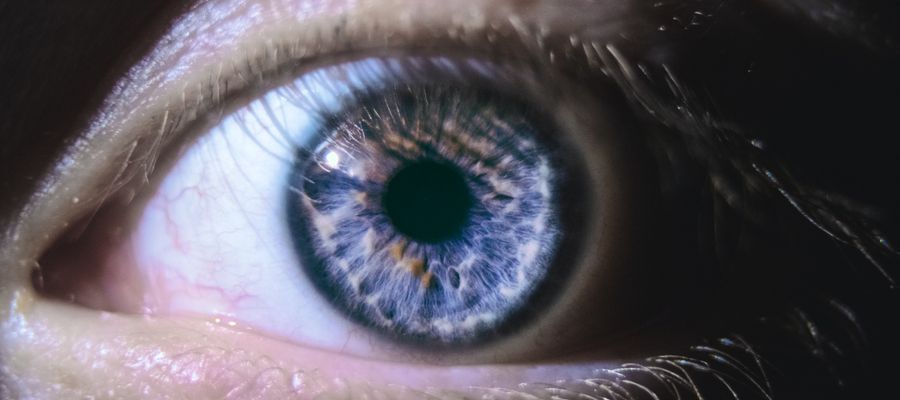How Does Alcohol Affect Your Eyesight & Vision?
Do you often enjoy a drink with your dinner or a beer with your friends after work? Moderate alcohol consumption doesn’t cause significant health issues. But drinking every day and more than one glass does.
While most people are aware too much alcohol damages the liver and can cause heart problems, few understand how alcohol affects vision. Some of the problems are temporary. But regular alcohol abuse can lead to permanent eye damage.
Let’s take a closer look at the key alcohol effects on eyesight.
Alcohol and Blurred Vision
It’s no secret that alcohol consumption interferes with normal brain function. This affects all bodily functions since they are controlled by the brain.
As far as the eyes are concerned, even a moderate alcohol intake will affect basic eye functions such as depth perception, contrast sensitivity, visual short-term memory, and visual temporal processing.
This can cause double vision or blurred vision, one of the most common alcohol eye problems. Blurred vision can be very unpleasant, or downright dangerous if you’re driving.
Alcohol and Red Eyes
Red eyes are a telltale sign of a night of heavy partying. Bloodshot eyes are usually caused by drinking large quantities of alcohol, which dilates the tiny blood vessels on the surface of the eyes, causing a red and inflamed appearance. Applying cold compresses on the eye provides quick relief as it makes blood vessels contract to their normal size.
Alcohol and Eye Muscle Weakness
Occasional alcohol ingestion, even in light to moderate quantities, acts as a depressor of the central nervous system. Alcohol affects many areas of the brain, including those controlling eye movements.
The presence of alcohol in your body affects the activity of several types of neurotransmitters. At the same time, alcohol consumption causes significant weakness in the eye muscles.
As a result, alcohol can cause involuntary rapid eye movement, also known as nystagmus. This problem can be a symptom of an underlying disease, but alcohol can worsen involuntary or jerky eye movements. This is the reason police officers sometimes trace eye movements to detect alcohol consumption.
Alcohol and Dry Eyes
Alcohol is a diuretic. It makes you urinate more often, which can lead to dehydration. This is why you feel extremely thirsty after a night of heavy drinking. Dehydration caused by alcohol consumption is felt throughout the body, including the eyes, which can become dry.
Dry eyes can cause a wide range of very annoying symptoms, such as itchiness, burning sensation, sensitivity to light (photophobia), and even inflammation.
Sometimes, the body tries to correct the problem by triggering reflex tearing. The odd thing is that the tears produced are rarely enough to moisturize the eyes. They will give you watery eyes instead, a condition that is quite distracting and annoying, not to mention unsightly.
Alcohol Effect on Pupils
One of the ways alcohol affects eyesight is delayed pupil reaction. Once again, the cause is poor communication between the brain and the eyes, under the influence of alcohol.

When a person is drunk, pupils will take longer to react to light stimuli. As a result, they cannot dilate or contract quickly enough.
This can be dangerous if you’re driving and your eyes cannot respond rapidly enough to differences in light. For example, when you need to quickly process the meaning of approaching headlights. Together with slower reactions elsewhere in the body, this can lead to traffic accidents.
Alcohol and Color Perception
Too much alcohol in the system can affect the way the eyes determine the contrast between shades of similar colors. At the same time, an alcohol-addled brain has difficulties interpreting the sharp contrast between light and dark. Problems with color perception can be very dangerous for drivers.
Alcohol and Vision Loss
Alcohol consumption can cause significant loss of vision. There are studies linking drinking to optic neuropathy. The condition is also known as tobacco-alcohol amblyopia. It’s a progressive disease characterized by symptoms such as loss of vision, diminished peripheral vision (tunnel vision), and decreased color perception.
People who drink heavily are at risk of developing this type of neuropathy. Since the symptoms can be very subtle in the early stages, the condition is often diagnosed only when the damage is irreversible.
This type of optic neuropathy can also be the result of methanol ingestion. Methanol is a toxic type of alcohol used in various industries. It is, for instance, present in hand sanitizers and other disinfectants.
Heavy drinkers sometimes consume such products, and this can lead to methanol poisoning and optic neuropathy. Left untreated, this condition can lead to blindness.
Alcohol and Frequent Migraines
This is more than your typical hangover. Regular consumption of moderate to large quantities of alcohol can trigger frequent and debilitating migraines.

If you’ve ever experienced a migraine, you’re probably familiar with the visual aura that announces a terrible headache. You may experience random blind spots, weird light patterns, and a diminished vision as everything around you seems to be steeped in gray.
People suffering from migraines often experience sharp pain at the back of the eyes, as well as photosensitivity.
Alcohol and Vision
Recent studies have shown a link between alcohol abuse and the risk of developing cataracts. It’s not the alcohol itself that causes cataracts, but the nutrition deficiencies associated with alcohol consumption.
Experts believe nutritional deficiencies also play a role in optic neuropathy. Vitamin therapy may stop and reverse vision loss, at least in the early stages of the disease.
Other studies on alcohol and eyesight suggest that regular alcohol consumption increases the risk of developing age-related macular degeneration (AMD).
Takeaway
Alcohol effects on eyesight can be serious and even dangerous. Does this mean you have to give up alcohol completely?
Moderating your alcohol intake should be enough to safeguard your vision. According to the CDC, men should limit themselves to 2 drinks per day, while women should only have one.
The bottom line: a few glasses now and then won't damage your eyes.
